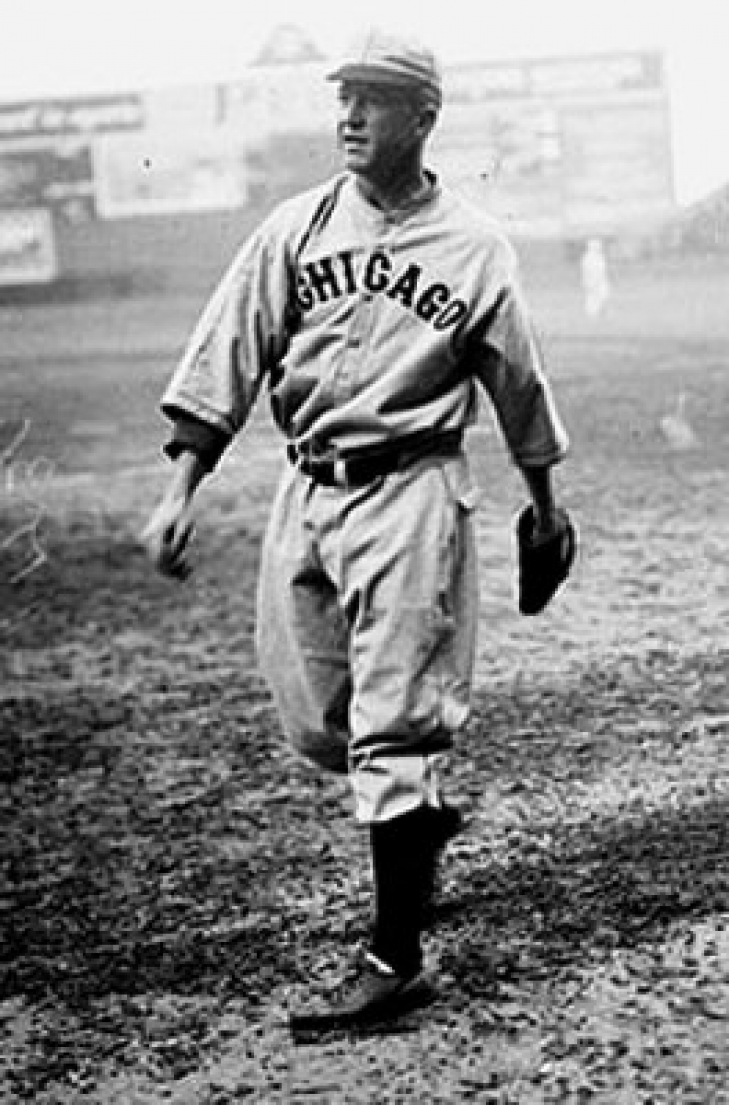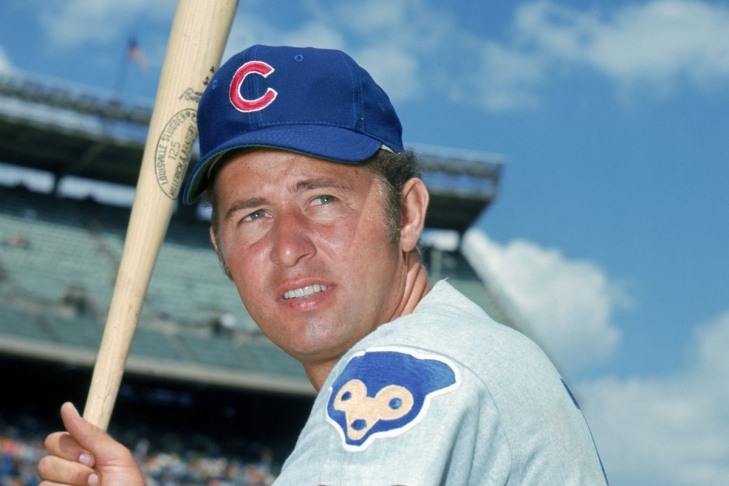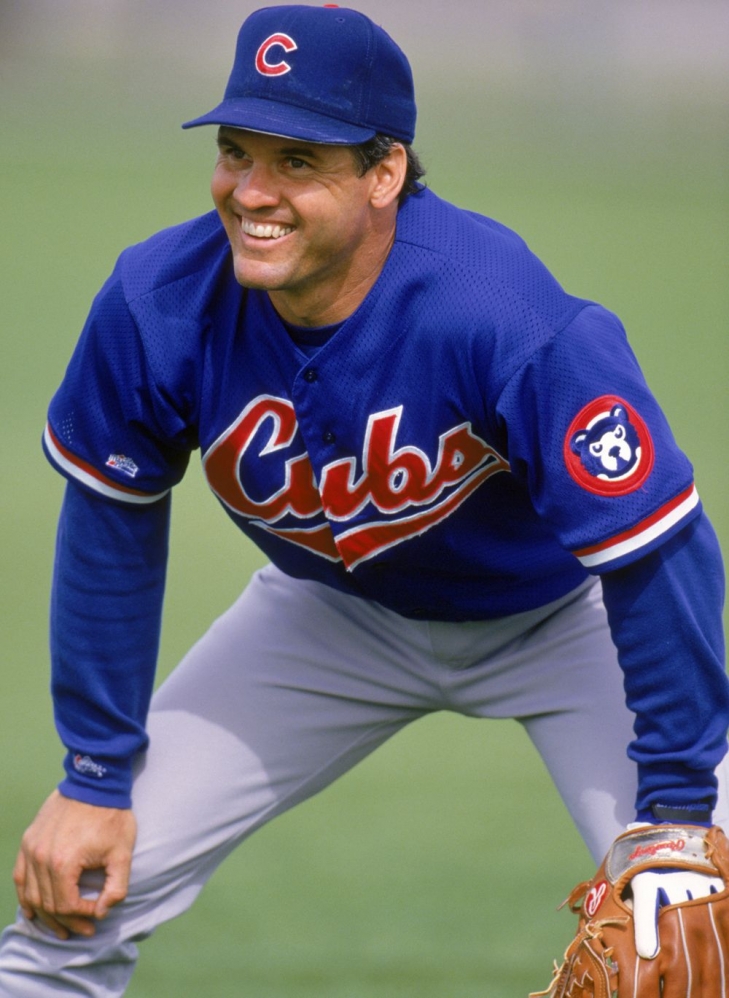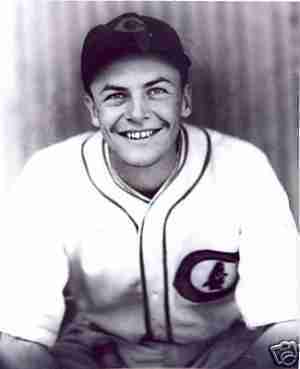23. Carlos Zambrano
Carlos Zambrano played all of but his final season with the Chicago Cubs, where the Venezuelan was a three-time All-Star who also finished third in Cy Young voting five times. In the first decade of the 2000s, Zambrano was one of the more dependable hurlers and was the only one in the NL who had at least 13 Wins from 2003 to 2008. In 2006 he made history as the first Venezuelan to lead the National League in Wins, and he would finish in the top ten in ERA four times.
27. John Clarkson
14. Pete Alexander
Grover Cleveland "Old Pete" Alexander far and away had a much better career earlier when he was with the Philadelphia Phillies, where he had won the Pitcher's Triple Crown twice. Still, the Phillies needed the money and sold his contract to the Chicago Cubs.
8. Stan Hack
An upper-tier Third Baseman and longtime leadoff man, “Smilin" Stan Hack would play all 1,938 of his Major League games with the Chicago Cubs. Hack cracked the Cubs roster in 1932, and in 1934 he was affixed as the permanent player at the hot corner. As the team's leadoff man, he would display consistent hitting with a lifetime Batting Average of .301 and five top ten finishes in that metric. He did not just hit is way on base as he was a patient batter who knew how to work the count. He had an excellent On-Base Percentage of .394, and five times he was a top five finisher. On the base paths, he was a two-time leader in Stolen Bases (albeit with numbers under 20), but there was no doubt that he was everything you wanted in a leadoff man.
10. Gabby Hartnett
Gabby Hartnett was considered the best Catcher in the National League (maybe all of baseball) for a decade, and why wouldn't he be?
28. Hack Wilson
Hack Wilson was playing for Toledo of the American Association after falling into a slump with the New York Giants. He was left unprotected (some say an oversight), and the Chicago Cubs swooped in and claimed him late in 1925. The Giants loss was the Cubs game as Hack Wilson would win the National League Home Run crown in 1926, a feat he would repeat in 1927, 1928, and 1930. Wilson wasn't just hitting for power as with the exception of 1931, and he never had a season where he batted under .300 or had an OBP under .400. Wilson would twice lead the NL in Walks, and his Slash Line as a Chicago Cub is an incredible .322/.412/.590.
7. Ferguson Jenkins
The greatest Pitcher in Chicago Cubs history, Ferguson Jenkins arrived in what turned out to be a lopsided trade from the Philadelphia Phillies. The Canadian-born Jenkins would break out in his first full season (1967) with the Cubs where he would be named an All-Star, win 20 Games, and was the runner-up for the Cy Young.
4. Ron Santo
Ron Santo would crack the Majors with the Cubs in 1960, and the Third Baseman would quickly establish himself as one of the premier men at the hot corner, both with his bat and glove over the next decade-plus. Santo would tabulate an impressive 2,171 Hits as a Cub and even more impressively knew the art of getting on base. Santo led the NL in Walks four times and was a two-time leader in On Base Percentage.
2. Ryne Sandberg
Ryne Sandberg arrived in Chicago via one of the most lopsided trades in baseball history as the future Hall of Fame arrived with Larry Bowa for Ivan DeJesus. Sandberg was converted to an infielder, and after playing only six games in the Majors with Philadelphia, he would be converted from Outfield to Third Base (he would then move to Second a year after)
3. Ernie Banks
In terms of overall iconic status at Wrigley Field, Ernie Banks would be number 1.
Of course, he would! He is "Mister Cub" after all!
1. Cap Anson
Arguably the first superstar in baseball history, Cap Anson joined the then-named Chicago White Stockings in 1876 and would become one of the greatest hitters of the game for years. In the 22 years he played in Chicago, Anson batted over .300 in 19 of them including a 15-year streak (1876 to 1890), and he would win three Batting Titles and four second-place finishes in that stretch. Anson would find other ways to get on base as the superstar was also a three-time leader in On Base Percentage and finished second in that statistic four times. His hits were also timely as he would lead the league in Runs Batted In eight times and to this day is fourth all-time in that metric. He was also considered to be an above-average fielder at the time of his peak.
5. Billy Williams
Billy Williams played the first 14 of his 16 seasons with the Chicago Cubs, where he quickly established himself as one of the best hitting Leftfielders in the game. Williams would win the Rookie of the Year Award in 1961 with a 25 Home Run season. Power would be a big part of his game, as he blasted 20 or more taters the next 12 seasons and a career-high of 42 in 1970. That year, the six-time All-Star would lead the NL with 205 Hits, and 137 Runs Scored, and Willians would have a .322 Batting Average, and he was second in MVP voting. Williams would again be the runner-up for the MVP when he won the Batting and Slugging Title and went deep 37 times.
33. Stan Hack
Stan Hack played his entire sixteen seasons as a player for the Chicago Cubs. He was one of the Cubbies most popular players as “Smilin” Stan’s sunny disposition made him a fan favorite among players, fans and journalists alike. It also didn’t hurt that he was one hell of a hitter.
Aramis Ramirez Retires
Ramirez leaves the game with some impressive accolades. He was a three time All Star, a one time Silver Slugger and would finish in the top ten in MVP voting three times. Statistically, he leaves the game with 386 Home Runs and 2,303 Hits and led the National League in Doubles in 2012. He would play his entire career in the National League, beginning (and ending) his career with the Pittsburgh Pirates with lengthy stints with the Chicago Cubs and Milwaukee Brewers along the way.
We always ask the question here at Notinhalloffame.com when we have a retirement as to whether that said player is HOF caliber. While Ramirez had a very good career, his numbers, especially poor defense resulting in a career bWAR of 32.1 isn’t one that will cut it in the modern thought process, and he will struggle to gain more than a handful of votes in 2021, the first year that he becomes Hall of Fame eligible.
While Aramis Ramirez has completed his service to Major League Baseball, he will do a farewell tour in his native Dominican Republic playing for Tigres del Licey in the Dominican Winter League.
We here at Notinhalloffame.com would like to wish Aramis Ramirez the best of luck in his post-MLB career.
293. Derrek Lee
Derrek Lee is an underrated offensive player who has a phenomenal offensive year in 2005 but is not remembered for much else.
Lee was briefly a San Diego Padre before he was traded to the Florida Marlins in 1998. With Florida, the First Baseman had four 20 Home Run years, peaking with a 31-HR season in 2003, which coincided with him leading the Marlins to a World Series Title. As most of you know, Lee (along with everyone else who was talented) was packaged away in a disgusting cost-cutting move, and Lee wound up with the Chicago Cubs.
It was with Chicago where Lee had his best years, specifically in 2005, where he led the National League in Hits (199), Doubles (50), Batting Average (.335), Slugging (.662), and OPS (1.080). Lee was an All-Star, Gold Glove winner, and Silver Slugger and third in MVP voting. He could not build on that as injuries held him to 50 Games in 2006, but he was an All-Star and Gold Glove winner in 2007, and was ninth in MVP voting in 2009. With the Cubs, Lee had five 20-plus Home Run years, with three exceeding 30.
Lee finished his career with Atlanta, Baltimore, and Pittsburgh, retiring in 2011 with 1,951 Hits, 331 Home Runs, 1,078 RBIs, and a .495 Slugging Percentage.
None



















